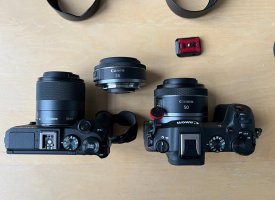I find it quite funny that people in this forum keep saying that "Canon dominates the camera market", when it is a shrinking business. Thats like saying that company XY dominates the horse carriage market while the car is around. The camera market is at around 15% of what it once was and it keeps bleeding users daily. The true dominators of the camera market are Apple, Samsung etc.
IMO the M-line was an usable alternative for someone who wanted a true ILC while not going overboard on prize and size. Now we have RF-S and Canon produces stuff like the laugingly bad R100 - trying to win over smartphone users with a camera lacking a touchscreen.
Try explaining to a new user, lets say a fifteen year old buyer of a R100 with a kit lens, why his dedicated camera will not be able to produce a portrait with bokeh (unlike his friends shitty 200 bucks android phone), unless he forks out another couple hundred bucks for a portrait lens at which point he could have bought an iPhone Pro (which can also edit and upload the picture in seconds).
Canon had an established user base, a selection of nice and beloved lenses and a good reputation. They threw it all away to force users into the FF "upgrade path" while obviously missing that these users will upgrade to something else entirely.
/rant over - I really only wanted a M5 II with IBIS, 32mp, eye af and the new 2.8 Sigma lenses


